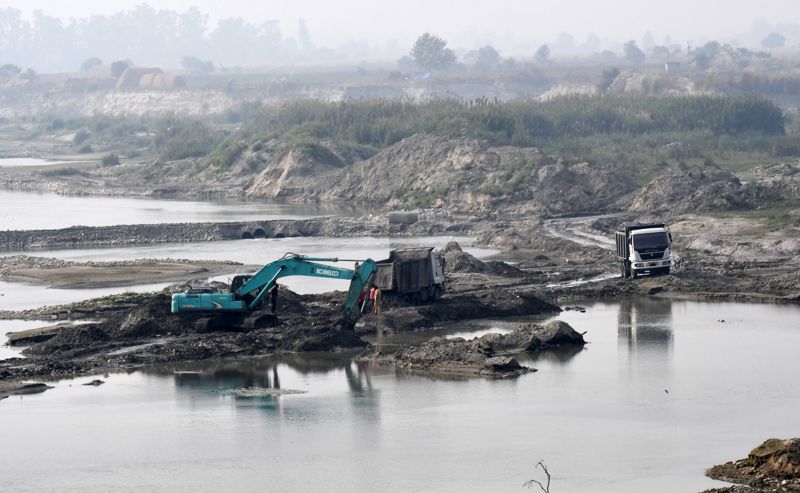Ropar, February 27
The whirring of a poclain machine digging a common grazing ground (charand in local parlance) in the Swan riverbed on Monday night alerted members of the Ilaqa Sangharsh Committee. They rushed to the spot (near Bhalan village) and tried to catch hold of the machine operator. He, however, managed to flee but the machine was seized by officials.
That was one of the 10 machines seized by the authorities in the past one month.
Locals had formed the committee last year after the mining mafia “grew big”, and increased the extraction of sand and stone from the rivers in the district, damaging bridges, roads and ecology.
ECONOMICS behind it
Mining generates direct or indirect employment for thousands of people in Ropar district. Some are hired as machine operators and drivers, while some work as labourers at stone crusher units. Hundreds of others have built automobile repair shops and ‘dhabas’ outside stone crusher units.
Besides, landowners have been earning crores of rupees by selling off their land situated on the riverbed. One acre of land in Agampur area is bought for up to Rs32 lakh by the mining mafia to extract sand and gravel.
Web of ‘goonda’ tax
To avoid transportation charges and other expenses, stone crusher owners prefer lifting sand and gravel from an unauctioned area in collusion with landowners. As a result, construction material at auctioned sites (taken on contract) remain unsold.
To make up for losses, the contractor in alleged connivance with politicians and officials set up illegal barricades and collect Rs4.25 per cubic ft as “royalty”, termed as “goonda” tax, from crusher owners.
Bridges in the Algran and Agampur areas face the threat of collapse because of rampant illegal mining.
The Swan and Sutlej riverbeds have been dug up till the piers of the bridges. Sand has been extracted through submersible pumps up to the depth of 80 ft, much beyond the permissible limit of 10 ft.
As a result, the level of underground water has dipped drastically in villages situated along the Sutlej and Swan — Harsa Bela, Mehandpur, Bhangal, Khera Kalmot, Majari lower, Haripur, Palata, Bhalan, Taraf Mazari, Nangran and Algran. Famers say they have to spend lakhs of rupees on new tubewells.
Experts point out that deep digging of the riverbed will pollute the underground water. According to geologist Jaspal Singh, the digging of riverbed to such level punctures the aquifer (underground layer of water-bearing permeable rock). That is the reason that the underground water emerges at mining sites, he says.
Discussions
Discussions
